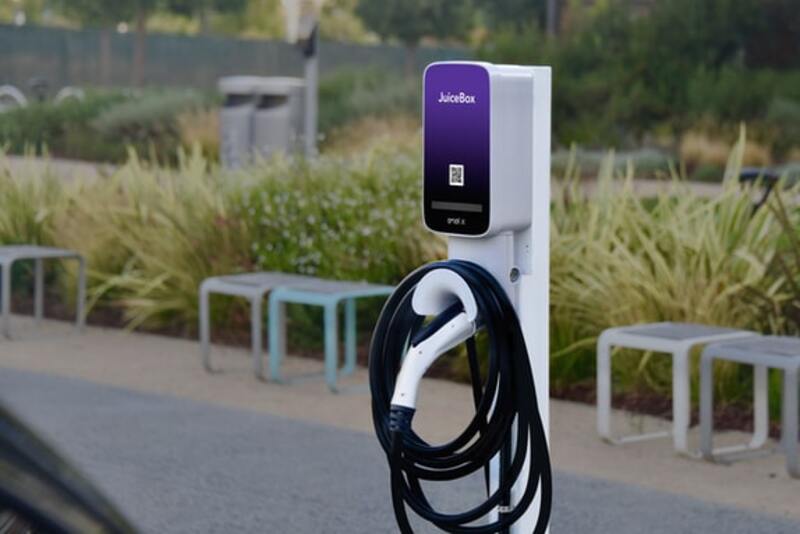Introduction
Electric vehicles (EVs) are becoming increasingly popular as a means of transportation. With the increasing number of EVs on the road, the need for reliable and efficient EV chargers has also grown. One option for EV owners is the JuiceBox EV charger.
The JuiceBox EV charger is a Level 2 EV charger that can be installed in a home or other private location. It is designed to be easy to use and is compatible with all EVs on the market. In this article, we will take a closer look at the features and benefits of the JuiceBox EV charger and discuss how to install and maintain it.
Features and Benefits
The JuiceBox EV charger offers a variety of features that make it a convenient and reliable option for EV owners. Some of the key features include:
- Fast Charging: The JuiceBox EV charger can charge an EV up to six times faster than a standard Level 1 charger.
- Smartphone App: The JuiceBox EV charger can be controlled and monitored using a smartphone app, which allows users to start or stop charging, view charging status, and receive notifications.
- Energy Monitoring: The JuiceBox EV charger includes an energy monitoring system that tracks the amount of energy used and the cost of charging.
- Weatherproof: The JuiceBox EV charger is weatherproof and built to withstand harsh outdoor conditions.
When compared to other EV chargers on the market, the JuiceBox stands out for its fast charging capability, easy-to-use smartphone app, and energy monitoring feature. Additionally, the weatherproof design makes it a great option for those looking to install a charger in an outdoor location.
The benefits of using a JuiceBox EV charger are numerous. Some of the most notable include:
- Convenience: With the ability to charge an EV up to six times faster than a standard Level 1 charger, the JuiceBox EV charger provides a convenient way to charge an EV.
- Cost Savings: The energy monitoring system included with the JuiceBox EV charger allows users to track the cost of charging, which can help them save money on their electric bills.
- Peace of Mind: The ability to start or stop charging and view charging status using the smartphone app provides peace of mind for EV owners who are away from their cars.
Installation and Setup
Installing a JuiceBox EV charger is a relatively simple process that can be completed by most DIY enthusiasts. Before beginning the installation, it is important to select the best location for the charger. Some factors to consider when selecting a location include:
- Accessibility: The charger should be located in a place that is easily accessible to the EV.
- Safety: The charger should be located in a safe area, away from any potential hazards.
- Weather: The charger should be located in an area that is protected from the elements.
Once a location has been selected, the installation process can begin. The steps for installing a JuiceBox EV charger are as follows:
- Turn off the power to the location where the charger will be installed.
- Install the JuiceBox EV charger using the provided hardware and instructions.
- Connect the JuiceBox EV charger to the home’s electrical system.
- Turn the power back on and test the charger to ensure it is working properly.
It is important to note that the installation process may vary depending on the specific model of the JuiceBox EV charger and the electrical system of the home. It is always recommended to consult a licensed electrician for professional installation.
Usage and Maintenance
Using the JuiceBox EV charger is simple and straightforward. To begin charging, simply plug the EV into the charger and press the button on the charger or use the smartphone app to start the charging process. The JuiceBox EV charger also has a built-in LED light that indicates the charging status of the EV.
- To ensure optimal performance and longevity of the JuiceBox EV charger, regular maintenance is recommended. Some tips for maintaining the charger include:
- Keep the charger clean: Clean the charger with a damp cloth to remove any dirt or debris that may have accumulated.
- Check the connections: Periodically check the connections between the charger and the EV to make sure they are secure.
- Monitor energy usage: Use the energy monitoring system to track the energy usage and cost of charging. This will allow you to identify any issues or inefficiencies in the charging process.
If an issue does arise with the JuiceBox EV charger, there are some simple troubleshooting steps that can be taken. Some common issues and their solutions include:
- Charger not working: Check the power source and ensure that the charger is properly connected to the EV.
- Slow charging: Check the EV’s battery level and ensure that the EV is compatible with the JuiceBox EV charger.
- Error messages: Consult the user manual or contact customer support for assistance with interpreting error messages.
Conclusion
The JuiceBox EV charger is a reliable and convenient option for EV owners. With its fast charging capability, easy-to-use smartphone app, and energy monitoring feature, the JuiceBox EV charger offers numerous benefits for EV owners. The installation process is relatively simple and can be completed by most DIY enthusiasts, although it’s always recommended to consult a licensed electrician for professional installation. Regular maintenance and troubleshooting simple issues can ensure optimal performance and longevity. Overall, the JuiceBox EV charger is a great option for EV owners looking for a fast and efficient way to charge their EVs.
Also Read: How much is it to charge an electric car?
